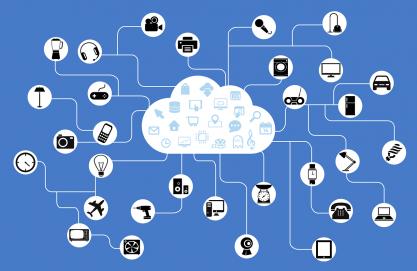 There is an emerging market in the world of IoT, and service providers are yet to realize the potential of it. With x-as-a-Service — x taking the shape of either software, platform, or infrastructure — already in play, it is only a matter of time before Device-as-a-Service becomes a cash cow for these providers.
There is an emerging market in the world of IoT, and service providers are yet to realize the potential of it. With x-as-a-Service — x taking the shape of either software, platform, or infrastructure — already in play, it is only a matter of time before Device-as-a-Service becomes a cash cow for these providers.
Like its predecessors, DaaS too is based on the pay-per-use model, which has been around for a while and has become popular among consumers, convenience being the selling point. From basic household utilities such as electricity to music and video streaming services like Spotify and Netflix, the PPU model has become a ubiquitous force that has changed the definition of consumption and is likely to end the concept of product ownership.
When the pay-per-use model is applied to smart appliances, the result is a Device-as-a-Service model. A consumer would be able to use a smart washing machine, dryer, refrigerator, or air conditioner without actually paying their heavy price tags, instead, they would pay a monthly fee based on their usage. Imagine paying a monthly bill for using a washing machine, the amount of which would vary should the user wash a handful of clothes, instead of washing an entire load of several pounds. The “units consumed” for a refrigerator would shoot up if its door is kept open longer than required, resulting in a spike in the monthly bill. Furthermore, harnessing the “smart” feature of an air conditioner, consumers could be advised to operate the appliance at a specific temperature or range to keep the monthly bill within a certain amount and avoid unnecessary surcharges. This, of course, would depend on external factors such as changes in seasons and climate.
There are several benefits of the Device-as-a-Service model:
From the viewpoint of service providers, the DaaS model would provide them with steady, predictable business after the initial installation of the appliance. Rather than receiving a lump sum amount for the outright purchase of an appliance, they would generate revenue from the monthly payments made by the consumer, regardless of the number of times the appliance is actually used in the 30-day period. Moreover, service providers can monitor the daily wear and tear of the appliances from the large volumes of data generated, thus enabling predictive maintenance. This would help in optimizing repair costs and inventory management of spare parts.
From the consumer viewpoint, convenience and flexibility are the highlights of the DaaS model. In the event that a consumer moves into a new home, they can do away with the hassle of shifting heavy appliances, and can simply inform their service provider of the change and continue their usage, uninterrupted. This would be possible due to the contractual nature of the model.
Environmentally, DaaS would avoid wasteful consumption of energy, aid in the timely maintenance of the appliance thereby extending its useful life, and optimize its usage in a way that would not harm the environment.
Companies like HP and Amazon already follow a pricing model that resonates with DaaS in some way. HP sells its printers at an economical price, charging more for the ink cartridges that its users purchase almost monthly. The online retail giant launched the Kindle, a revolutionary reading device, at a mouth-watering price, fully aware that the millions of e-book purchases would generate more revenue and turn out to be profitable in the long run. Carriers like Verizon and AT&T also follow a similar pricing model, dishing out subsidized smartphones in exchange for contractual agreements with a typical timespan of 24 months. These examples are a testament to the fact that data-driven consumption and billing is the future.
While IoT sensors are heavily used in automobiles and medical devices, their scope can be expanded to smart appliances as well. Whirlpool, for instance, has already taken the lead; the company can track the usage of its smart washing machines and even order detergents for its users before they run out of it. The only obstacle in the DaaS model is whether or not the current 4G networks would be able to manage so many connected appliances at a given point of time. Thanks to the rapid development of the faster, stable, and more reliable 5G network, this does not seem like much of a hurdle.
As companies put together the pieces of the IoT puzzle and become better equipped to handle vast amounts of data over superfast networks, the market of Device-as-a-Service seems to be a viable and obvious next step towards an IoT-enabled future.
Share this post via:





TSMC N3 Process Technology Wiki